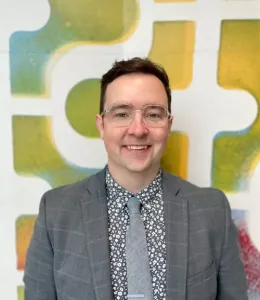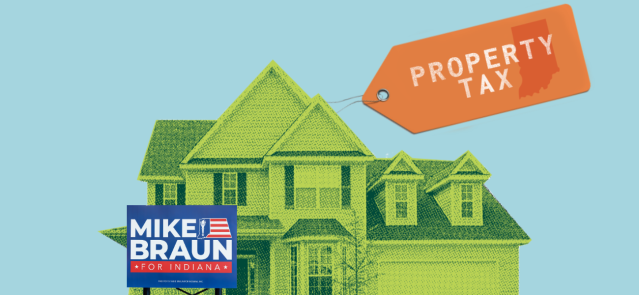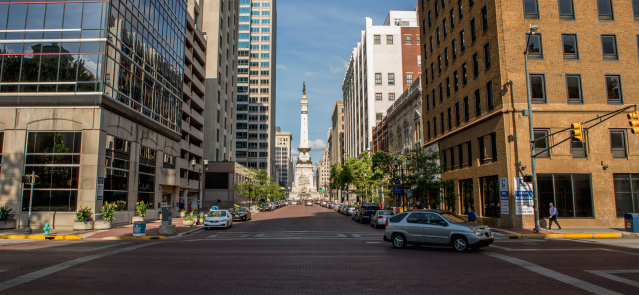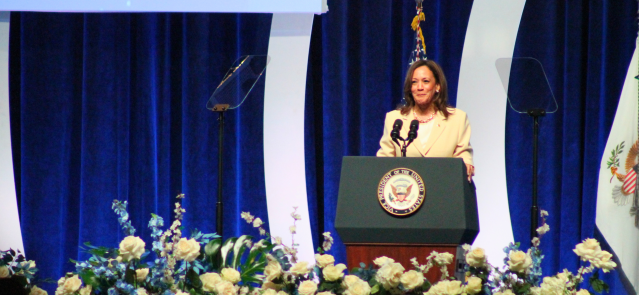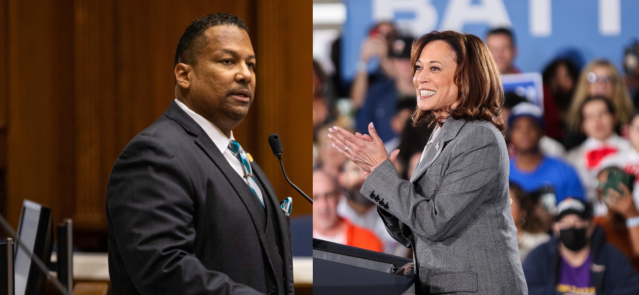Stay ahead of the curve as a political insider with deep policy analysis, daily briefings and policy-shaping tools.
Request a DemoGovernor signs bill targeting prison-to-homelessness ‘pipeline’ in Indianapolis

A bill designed to address a prison-to-homelessness “pipeline” in Indianapolis was signed into law by Gov. Eric Holcomb last Thursday.
House Bill 1087 will restrict the Indiana Department of Correction (IDOC) from dropping off formerly incarcerated people from other communities directly into Indianapolis’ homeless shelters — a practice that had drawn concerns from city leaders as resources grew thin for the capitol’s homeless population.
The signing caps a monthslong process detailed by State Affairs during the legislative session.
What’s happening
Prior to the bill, the IDOC could release a formerly incarcerated person into any requested community even if it wasn’t the person’s former home.
Some who did not have a place to go would request to be dropped off in Marion County, where there are a greater number of resources for people who are homeless.
But Rep. Justin Moed, D-Indianapolis, carried the bill to require the IDOC to release people into their home communities in most circumstances. They can be taken to other communities if they have been accepted into a reentry program and have either a job or housing lined up. Judges can also order someone to be released in another community for something like home detention or probation.
“We want to try to avoid this transportation of folks creating a pipeline from prison to homelessness,” Moed told a House committee in February. “We just want to work toward a goal of being thoughtful in how folks are coming out of the system, and where they’re going, to make sure they end up in the right place and head in the right direction.”
Why it matters
Nearly 3,400 people were released from Department of Correction custody into homeless shelters from 2018 to 2021, according to data provided to a state task force examining homelessness. Marion County saw a total of 993 people during the four-year period, or an average of 248 people per year.
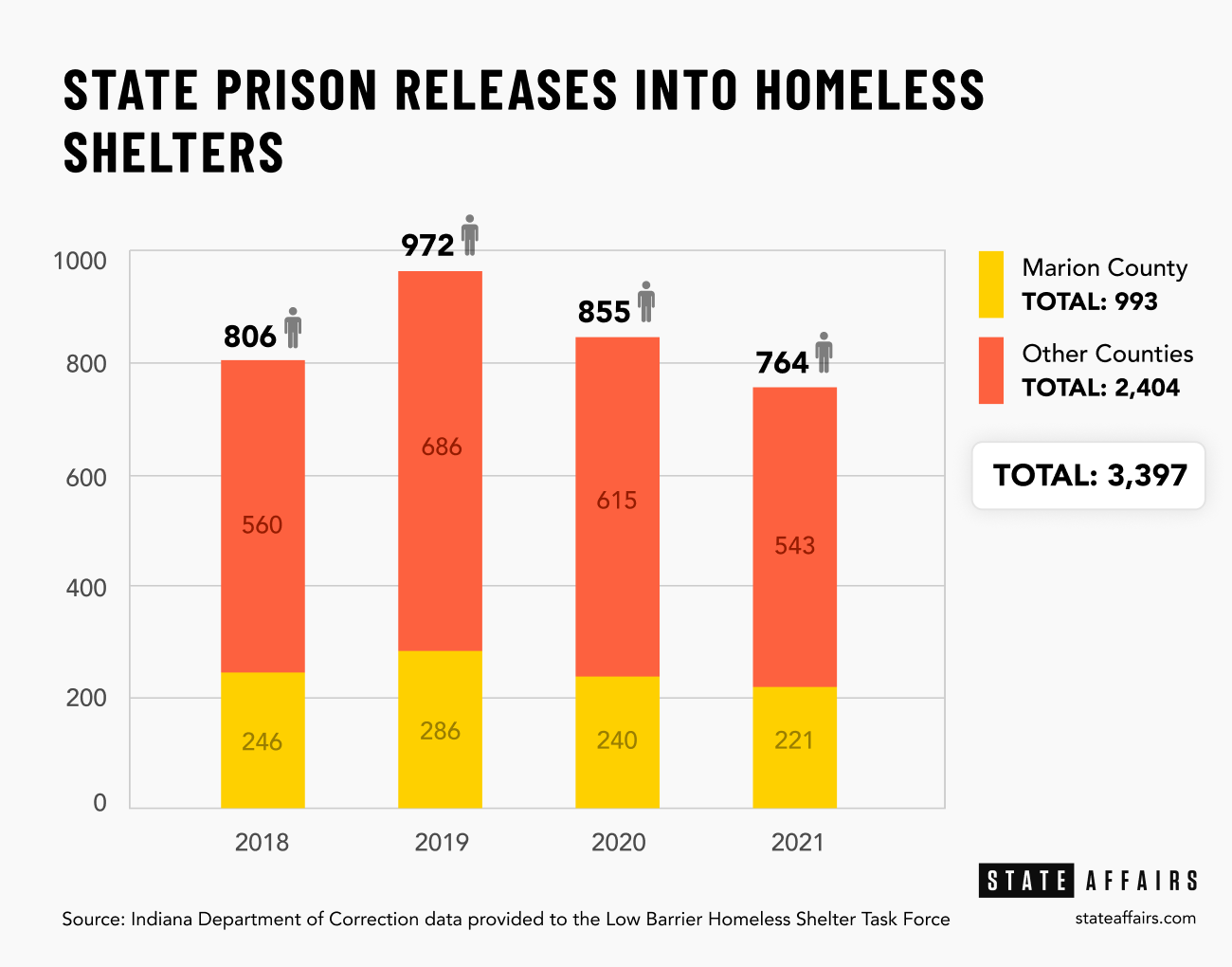
It is unclear how many people were initially slated for shelter placement but then later found alternative housing arrangements. It is also unclear how many were released into homeless shelters located outside of a person’s home county.
But the releases started coming at a time of stretched resources in Indianapolis.
The annual count for Marion County’s homeless population reached 1,761 last year, according to the nonprofit Coalition for Homelessness Intervention and Prevention. The number is 12% higher than the pre-pandemic levels recorded in 2019.
The addition of people who aren’t from the area — and who, therefore, lack the family, housing or financial support to reintegrate into the community — contributes to the problems created by growing homelessness, said the Rev. David W. Greene Sr., who serves as a leader in the Indianapolis Continuum of Care, a group of organizations and people working to reduce homelessness.
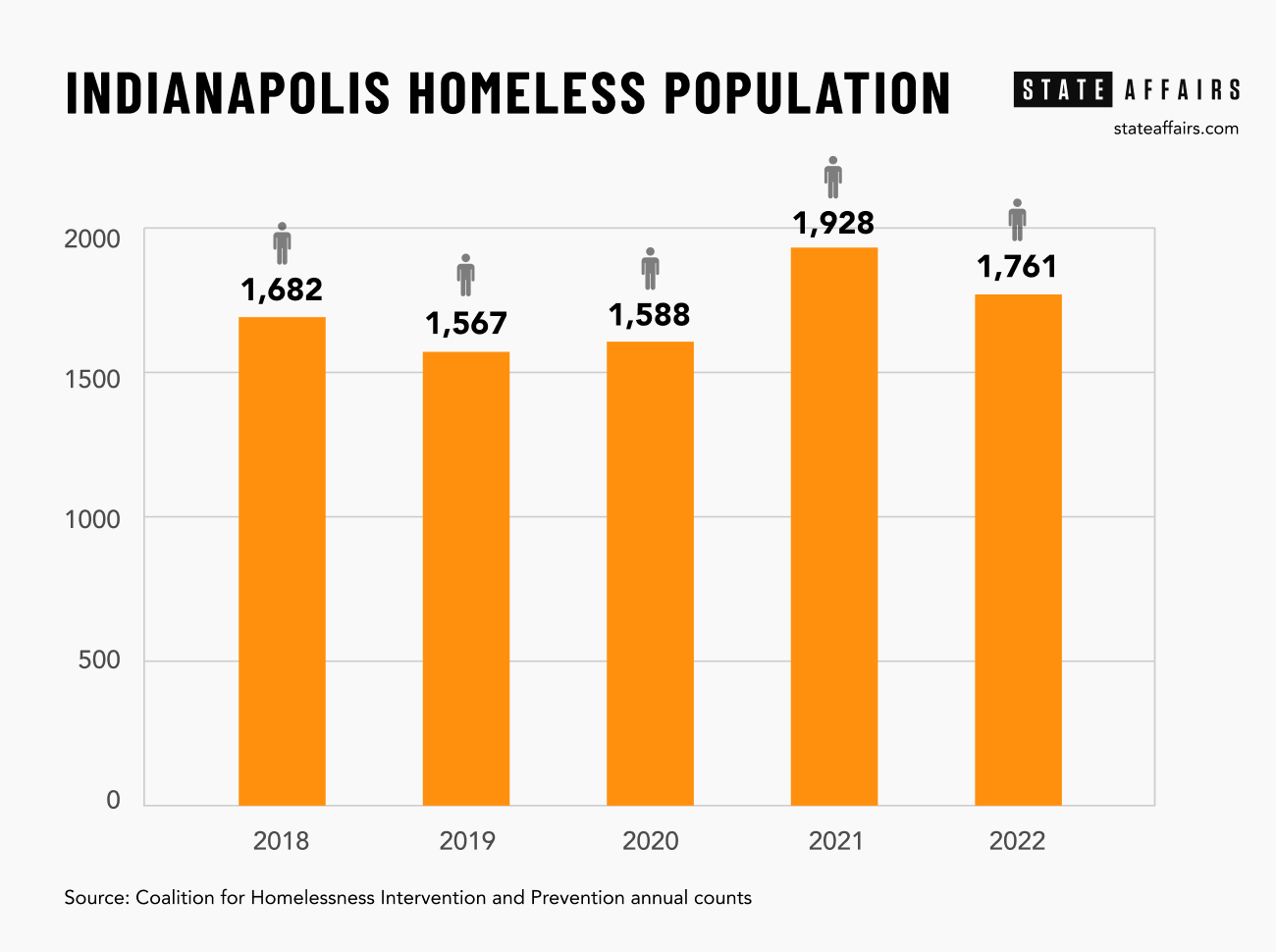
“That creates a greater burden on our homeless system here in Indianapolis when we really are struggling to keep up,” Greene told State Affairs in February. “It’s been going on for years.”
What’s next
After passing through the House this session, the Senate added a minor amendment to make the bill less burdensome on the IDOC. The House accepted the changes and sent it to Holcomb’s desk.
His signing means the law will take effect in July.
Contact Ryan Martin on Twitter, Facebook, Instagram, LinkedIn, or at [email protected].
Twitter @stateaffairsin
Facebook @stateaffairsin
Instagram @stateaffairsin
LinkedIn @stateaffairs
Header image: House Bill 1087 aims to address a prison-to-homelessness “pipeline,” according to Rep. Justin Moed, D-Indianapolis. (Credit: Brittany Phan for State Affairs)
4 things to know about Braun’s property tax proposal
Sen. Mike Braun, the Republican candidate for Indiana’s governor, released a plan for overhauling property taxes Friday morning that would impact millions of Hoosiers, Indiana schools and local governments. “Nothing is more important than ensuring Hoosiers can afford to live in their homes without being overburdened by rising property taxes driven by rapid inflation in …
Bureau of Motor Vehicles looks to add new rules to Indiana’s driving test
The Bureau of Motor Vehicles wants to amend Indiana’s driving skills test, putting “existing practice” into administrative rule. Indiana already fails drivers who speed, disobey traffic signals and don’t wear a seatbelt, among other violations. Yet the BMV is looking to make the state’s driving skills test more stringent. A proposed rule amendment looks to …
In Indianapolis, Harris says she’s fighting for America’s future
Vice President Kamala Harris, the presumptive Democratic presidential nominee, told a gathering of women of color in Indianapolis on Wednesday that she is fighting for America’s future. She contrasted her vision with another — one she said is “focused on the past.” “Across our nation, we are witnessing a full-on assault on hard-fought, hard-won freedoms …
Indiana Black Legislative Caucus endorses Harris, pledges future support
The Indiana Black Legislative Caucus unanimously voted Wednesday to endorse Vice President Kamala Harris’ presidential run and will look at ways to assist her candidacy, the caucus chair, state Rep. Earl Harris Jr., D-East Chicago, told State Affairs. The caucus is made up of 14 members of the Indiana General Assembly, all of whom are …
